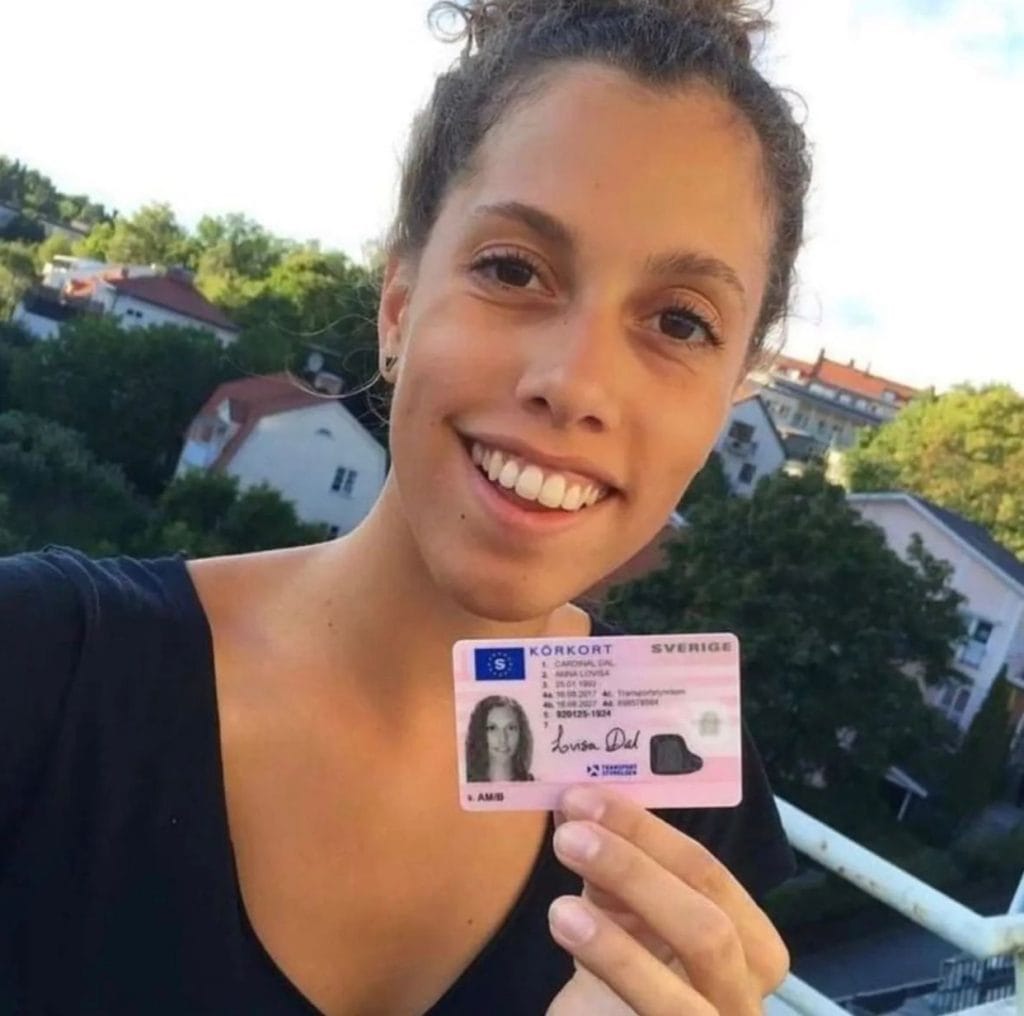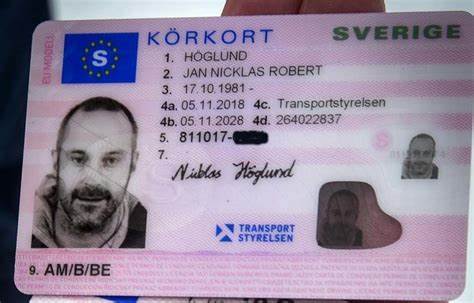20 Fun Infographics About Buy A1 Driving License
페이지 정보

본문
The Comprehensive Guide to Legally Obtaining a Driving License
Driving is a basic skill for many, providing the freedom to travel where and when you want, frequently making life more practical and satisfying. However, obtaining a driving license is a process that needs understanding, perseverance, and adherence to legal treatments. This guide aims to offer a detailed overview of the steps one must follow to legally obtain a driving license, highlighting crucial considerations and often asked questions to ensure a smooth and problem-free experience.
Comprehending the Basics
Before diving into the application process, KöRkort Utan Att Ta KöRkort it's vital to understand the fundamental requirements and kinds of driving licenses readily available. Driving laws vary significantly from nation to country, and even within various states or provinces within the same nation. Typically, there are numerous types of driving licenses, including:
- Learner's Permit: This is frequently the first action in the procedure, allowing new chauffeurs to get experience under guidance.
- Provisional License: Issued after passing a basic driving test, this license generally comes with restrictions and is a stepping stone to a full license.
- Complete Driver's License: Once all the essential requirements are satisfied, drivers can get a complete license, which uses complete driving advantages.
- Commercial Driver's License (CDL): Required for those who want to operate business vehicles, such as trucks or buses.
Steps to Obtain a Driving License
1. Research Local Driving Laws
The very first step in obtaining a driving license is to investigate the particular requirements in your area. Visit the main website of your local Department of Motor Vehicles (DMV) or equivalent agency to discover in-depth info about the licensing procedure, consisting of age constraints, needed files, and fees.
2. Prepare Required Documentation
Each jurisdiction has its own set of files that should be submitted to get a driving license. Commonly needed files consist of:

- Proof of Identity: A passport, birth certificate, or state-issued ID.
- Evidence of Residency: Utility bills, lease arrangements, or other main files that confirm your address.
- Social Security Number (if appropriate): In some countries, a social security number or equivalent is needed for identification.
- Vision Test Results: Some places need a vision test before issuing a learner's license or license.
3. Take a Driver's Education Course
Lots of states and countries require new chauffeurs to complete a driver's education course. These courses are created to teach the guidelines of the roadway, traffic laws, and safe driving practices. They can be finished online or in a classroom setting and often include both theoretical and useful components.
4. Look for a Learner's Permit
Once the needed documents is ready and the driver's education course is completed, the next action is to apply for a student's license. This usually includes visiting the DMV or submitting an application online. You will likewise require to pass a written test that covers traffic laws and driving understanding.
5. Practice Driving
With a student's authorization, you can start practicing driving under the guidance of a certified grownup. This is an essential step in constructing your confidence and skills behind the wheel. It's likewise essential to get experience in numerous driving conditions, such as night driving, highway driving, and driving in severe weather.
6. Arrange and Pass the Driving Test
After getting adequate driving experience, you can arrange a driving test with the DMV. The test will evaluate your capability to securely run an automobile and follow traffic laws. You will need to bring a properly registered and insured automobile to the test, and the inspector will evaluate your driving skills on a predetermined route.
7. Use for a Provisional License
If you pass the driving test, you will usually get a provisionary license. This license may feature restrictions, such as a curfew or a limitation on the number of guests you can have in the lorry. These restrictions are developed to minimize the risk of accidents and help new chauffeurs adjust to the road.
8. Upgrade to a Full License
As soon as you have actually held a provisionary license for the required duration and satisfied any extra requirements, you can update to a full driver's license. This process normally involves an easy application and might need a retest or extra paperwork.
Tips for a Successful Application
- Start Early: Begin the procedure as soon as you meet the age requirement to provide yourself sufficient time to prepare.
- Stay Informed: Keep up-to-date with any changes in driving laws or DMV procedures.
- Practice Regularly: Consistent practice is crucial to developing self-confidence and improving your driving abilities.
- Stay Calm During the Test: Anxiety can affect your performance, so take deep breaths and remain focused.
- Follow DMV Instructions: Pay attention to the guidelines provided by the DMV and the examiner throughout your test.
Frequently Asked Questions (FAQs)
Q: What is the minimum age to get a learner's permit?
A: The minimum age differs by jurisdiction. In the United States, it generally varies from 15 to 16 years old. In the UK, the minimum age is 17. Check your regional DMV site for particular information.

Q: Can I request a driver's license online?
A: Some jurisdictions allow you to finish parts of the application procedure online, such as filling out kinds and scheduling tests. However, you will usually need to check out a DMV office personally to submit needed files and take the driving test.
Q: What takes place if I stop working the driving test?
A: If you stop working the driving test, you can normally retake it after a specific duration. This duration differs by location, but it is typically a couple of weeks. It's a great concept to practice more before retaking the test to improve your opportunities of success.
Q: Can I drive alone with a learner's authorization?
A: No, a learner's permit generally requires you to be accompanied by a certified grownup, usually over 21 years of ages, who is seated in the front guest seat.
Q: Is a vision test needed to get a driving license?
A: Yes, many jurisdictions require a vision test to make sure that you can safely run a car. You can normally take this test at the DMV or with an approved eye doctor.
Q: How long does it require to get a full driver's license?
A: The time needed to obtain a full driver's license differs depending upon your jurisdiction and the particular actions included. Normally, it can take a number of months, consisting of the time needed to complete a driver's education course, hold a learner's license, and pass the driving test.
Q: Can I use a provisional license to drive for work?
A: It depends on the restrictions positioned on your provisionary license. Some provisionary licenses enable you to drive for work, while others might have particular constraints. Examine your license for information or contact the DMV for information.
Q: What is the difference between a learner's license and a provisional license?
A: A student's permit is the very first phase of the licensing process and enables you to drive only under supervision. A provisionary license, on the other hand, grants you more driving privileges however may still have some constraints, such as a curfew or guest limitations.
Q: Can I request a business driver's license (CDL) without a full driver's license?
A: No, you typically require a full driver's license before looking for a CDL. A CDL is a specialized license that requires extra training and testing, and it is just released to those who have actually shown the ability to safely run a standard vehicle.
Q: What should I do if I lose my driving license?
A: If you lose your driving license, you ought to report it to the DMV and look for a replacement. You might need to supply evidence of identity and pay a cost. It's likewise an excellent idea to alert your insurer and any other relevant celebrations.
Getting a driving license is a considerable turning point that opens new opportunities and increases self-reliance. By following the actions outlined in this guide and remaining informed about local laws and requirements, you can guarantee a smoother and more successful licensing procedure. Remember that driving is a serious responsibility, and putting in the time to learn and practice is necessary for your security and the safety of others on the road.
- 이전글How To Make An Amazing Instagram Video About Luton Car Locksmith 25.07.12
- 다음글Back Door Installation Warranties Tools To Help You Manage Your Daily Life Back Door Installation Warranties Trick Every Person Should Know 25.07.12
댓글목록
등록된 댓글이 없습니다.

